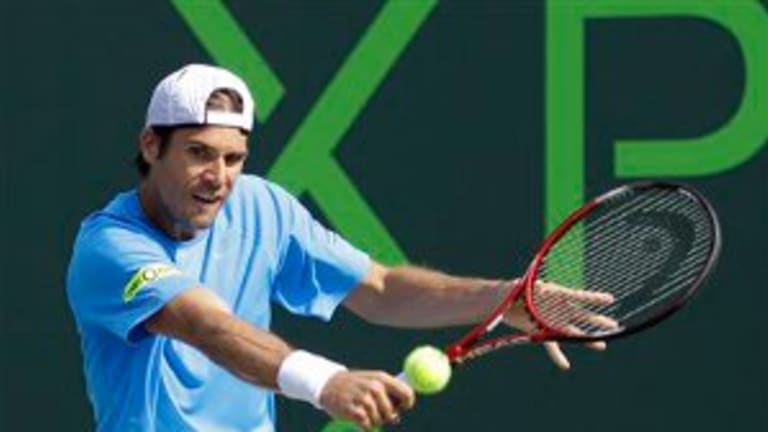This is one of those seam weeks during which the pro establishment takes a nice dip between calendar segments. So while there’s action in Casablanca, Katowice, and Houston (quite the trifecta of cities), it’s of the milder variety. It’s a good week to think about the kinds of things that fall between the cracks of a journalist’s notebook.
Let’s start with this concept of the “seam” or transition week. It’s yet another reality that undermines the steady if not always overpowering drumbeat for a shorter tennis season. I think tennis ought to address the length of its season when it actually has one. Right now it has segments. It’s not a seasonal sport, but an “interval” one.
It isn’t just guys like 31-year-old Roger Federer who disappear for weeks on end while their clock-punching peers soldier on. Andy Murray, flush with success and at the peak of his powers, has played exactly five of the 13 weeks so far this year (as a seeded player, his obligation at the Indian Wells and Miami Masters events was basically a week at each). In fact, he’s played just five weeks of tennis since the middle of last November. Nice work if you can get it.
Murray was off, or at least out of competition, for a month and a half before the Australian Open segment, and another six weeks afterward. I’m not criticizing Murray for that, just pointing out that in no other sport I can think of does a player get to disappear for five, six, or more weeks at a time. And while the game certainly is more demanding physically these days, the other day John McEnroe told me that in 1979, his third year on the tour and the first year he won a Grand Slam (the U.S. Open), he won 27 titles (the ATP officially has him at 26).
Okay, there’s a catch. Sixteen of those were doubles titles. But 10 singles titles? That’s a pretty good year’s work. Just to put it into perspective, that’s the same number of singles titles Novak Djokovic earned in his (so far) career year of 2011—and 16 doubles titles to boot, triumphs that kept him on site at tournaments where he may have lost earlier in singles, robbing him of rest and travel time.
The performance didn’t even earn McEnroe the No. 1 ranking; he didn’t achieve that until March of the following year. And after he won the U.S. Open in ‘79, McEnroe immediately played two back-to-back hard-court events (Los Angeles and San Francisco) before he finally took a four-week break. That year, by the way, bizarrely extended halfway through January of 1980 because the Masters (forerunner of the ATP World Tour Finals) was played at the start of the new year.
I think the players are lucky that their game evolved the way it did. Does anyone think it would be better for them if more conventional, tighter scheduling provided them with three months off after the U.S. Open—but made it impossible for them to take more than a week or two off at a time between January and the end of September?

